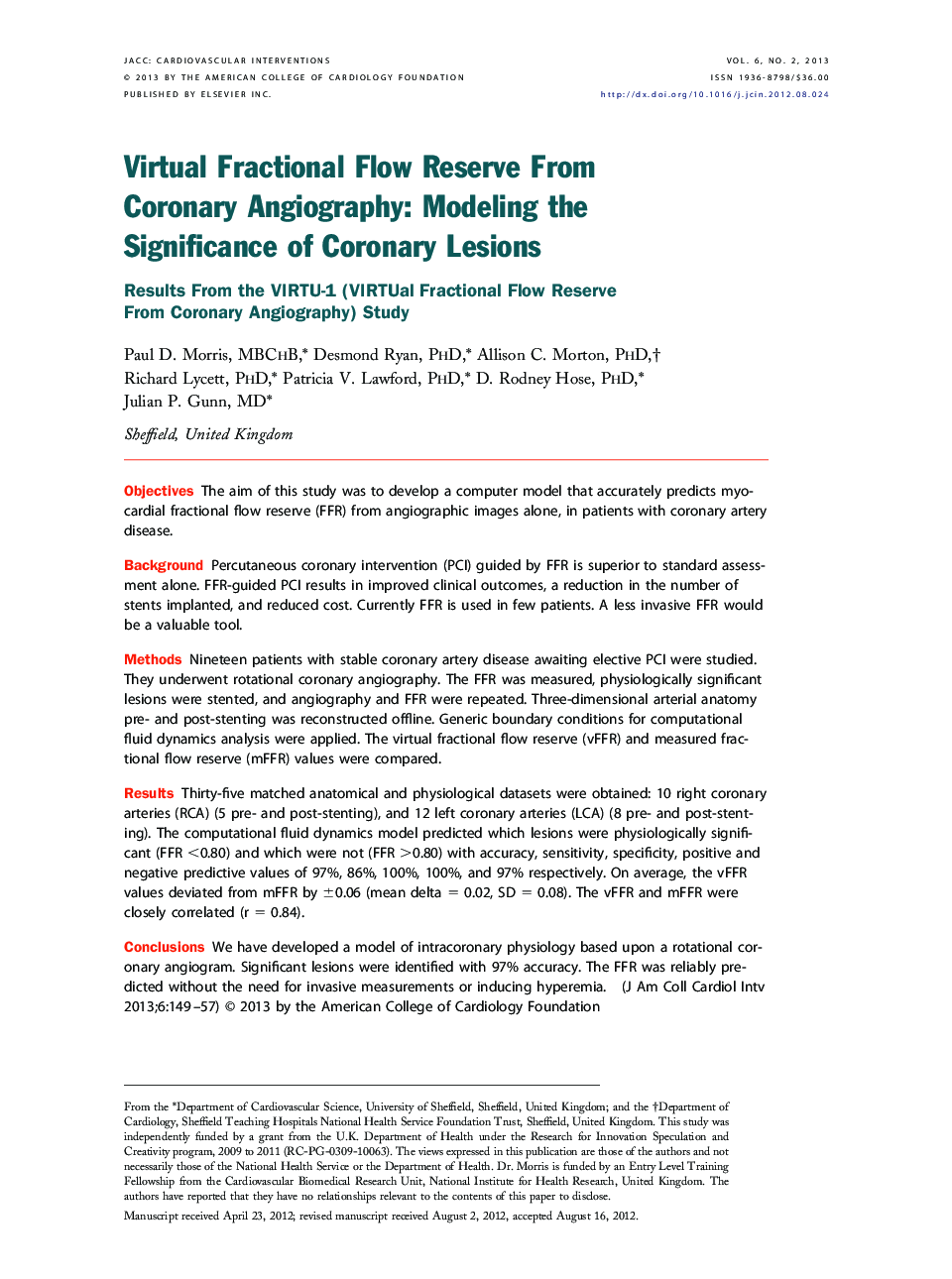| کد مقاله | کد نشریه | سال انتشار | مقاله انگلیسی | نسخه تمام متن |
|---|---|---|---|---|
| 2940512 | 1177035 | 2013 | 9 صفحه PDF | دانلود رایگان |

ObjectivesThe aim of this study was to develop a computer model that accurately predicts myocardial fractional flow reserve (FFR) from angiographic images alone, in patients with coronary artery disease.BackgroundPercutaneous coronary intervention (PCI) guided by FFR is superior to standard assessment alone. FFR-guided PCI results in improved clinical outcomes, a reduction in the number of stents implanted, and reduced cost. Currently FFR is used in few patients. A less invasive FFR would be a valuable tool.MethodsNineteen patients with stable coronary artery disease awaiting elective PCI were studied. They underwent rotational coronary angiography. The FFR was measured, physiologically significant lesions were stented, and angiography and FFR were repeated. Three-dimensional arterial anatomy pre- and post-stenting was reconstructed offline. Generic boundary conditions for computational fluid dynamics analysis were applied. The virtual fractional flow reserve (vFFR) and measured fractional flow reserve (mFFR) values were compared.ResultsThirty-five matched anatomical and physiological datasets were obtained: 10 right coronary arteries (RCA) (5 pre- and post-stenting), and 12 left coronary arteries (LCA) (8 pre- and post-stenting). The computational fluid dynamics model predicted which lesions were physiologically significant (FFR <0.80) and which were not (FFR >0.80) with accuracy, sensitivity, specificity, positive and negative predictive values of 97%, 86%, 100%, 100%, and 97% respectively. On average, the vFFR values deviated from mFFR by ±0.06 (mean delta = 0.02, SD = 0.08). The vFFR and mFFR were closely correlated (r = 0.84).ConclusionsWe have developed a model of intracoronary physiology based upon a rotational coronary angiogram. Significant lesions were identified with 97% accuracy. The FFR was reliably predicted without the need for invasive measurements or inducing hyperemia.
Journal: JACC: Cardiovascular Interventions - Volume 6, Issue 2, February 2013, Pages 149–157